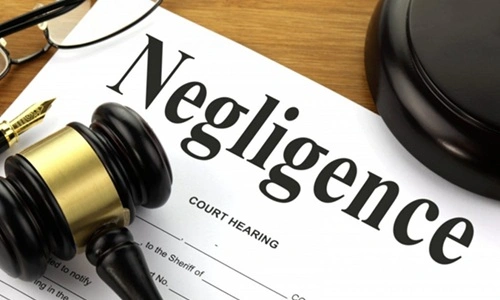When an accident occurs, determining who is legally responsible often depends on whether someone acted carelessly or failed to act when they should have. The law uses a specific framework to assess such situations, especially in personal injury cases.
Understanding negligence is essential because it forms the foundation of most injury claims. It involves proving that one person’s failure to act reasonably led to another person’s harm. However, simply getting hurt doesn’t automatically mean negligence took place; certain legal standards must be met.
To establish a successful claim, four key elements must be proven. Each element connects to the next, forming a chain that shows how an individual’s careless behavior resulted in actual damages.

1. Duty of Care
The first element in proving negligence is establishing that the defendant owed a duty of care to the plaintiff. This means the defendant had a legal obligation to act in a manner that avoids causing harm to others.
For example, drivers have a duty to follow traffic laws and drive safely, doctors have a duty to provide proper medical treatment, and property owners must ensure their premises are reasonably safe. This duty can vary depending on the relationship and the circumstances, but it always revolves around what a “reasonable person” would do in a similar situation.
2. Breach of Duty
Once the duty of care is established, the next step is to prove that the defendant breached that duty. A breach occurs when someone fails to meet the expected standard of care, either by doing something they shouldn’t have done or by failing to do something they should have.
For instance, if a driver texts while driving and causes an accident, or if a store owner ignores a wet floor without placing a warning sign, that behavior reflects a breach. In legal terms, it’s about showing that the defendant’s action fell short of what a careful and reasonable person would have done in the same situation.
3. Causation
Proving causation is crucial because it connects the defendant’s breach of duty to the plaintiff’s injury. In other words, it answers the question: Did the defendant’s actions actually cause the harm?
There are two main types of causation in negligence cases:
- Actual Cause (Cause-in-Fact): The injury would not have occurred “without” the defendant’s actions.
Example: A distracted driver rear-ends another car, directly causing the victim’s injuries.
- Proximate Cause: The injury must be a foreseeable result of the defendant’s conduct.
Example: It’s foreseeable that texting while driving can cause an accident and harm another person.
Both types must be established to show that the defendant’s action wasn’t just careless but directly responsible for the injury.
4. Damages
The final element, damages, refers to the actual harm suffered by the plaintiff. Without damages, there’s no valid negligence claim, even if the defendant acted carelessly.
Damages are generally divided into two categories:
- Economic Damages: These are measurable financial losses such as medical bills, lost wages, property repair costs, or rehabilitation expenses.
- Non-Economic Damages: These cover non-financial losses like pain and suffering, emotional distress, or loss of companionship.
Courts consider both types to ensure victims receive fair compensation that reflects both their financial and personal suffering.
How the Four Elements Work Together
The four elements of negligence work like links in a chain; each one must connect firmly to the next for the claim to succeed.
- Duty of care establishes the responsibility to act safely.
- Breach of duty shows that responsibility was broken.
- Causation proves that this breach directly led to the injury.
- Damages confirm that real harm was suffered as a result.
If even one of these links is missing, the entire case can collapse. For example, if there’s no proof that the breach caused the injury, or if no measurable damages exist, the claim cannot hold.
Together, these elements ensure justice is balanced, protecting victims by holding careless individuals accountable while also preventing false claims. Whether in a car accident, workplace injury, or medical malpractice case, understanding how these four elements of negligence connect is key to achieving a fair and lawful outcome.
Key Takeaways
- Negligence means failing to act with reasonable care, causing harm.
- Duty of care is the legal responsibility to act safely.
- Breach of duty happens when someone fails to meet that standard.
- Causation connects the careless act to the injury.
- Damages prove the real harm suffered by the victim.

Our dedicated team gathers information from all the reliable sources to make the law accessible and understandable for everyone. We provide the latest legal news stories from across the country, delivered straight to you.
